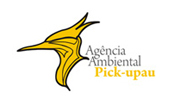Press release
Published: 27 Apr
2010
While technological advances produce cleaner
vehicles, more and more passengers and goods
are travelling further distances, thereby
offsetting efficiency gains. Based on analysis
of long-term trends, a new European Environment
Agency (EEA) report calls for a clear vision
defining Europe's transport system by 2050
and consistent policies to achieve it.
On its tenth anniversary,
the EEA's TERM report presents an overview
of transport's impact on the environment,
built on an analysis of 40 policy-relevant
indicators. The report's findings for the
period 1997–2007 present a mixed picture,
with some improvements in air pollutants
and serious concerns regarding persistent
growth in transport’s greenhouse gas emissions.
'Over the last ten years
we have concentrated on measures to improve
mobility whilst decoupling transport emissions
from economic growth. Today, we can see
that the extensive investment in transport
infrastructure has enabled us to travel
further to meet our daily needs, but has
not led to a decrease in the amount of time
that we are exposed to noise, congestion
and air pollution,' said Professor Jacqueline
McGlade, Executive Director of EEA. 'In
the future we will need to focus not only
on the mode of transport, but also the reasons
why people choose to travel, because ultimately
mobility is inextricably linked to our quality
of life.'
Transport, including
international aviation and maritime transport,
accounts for around a quarter of total EU
greenhouse gas emissions. Unlike some sectors,
transport's impact on the environment continues
to be closely linked to economic growth.
Trends and findings
Freight transport tends to grow slightly
faster than the economy, with road and air
freight recording the largest increases
in the EU-27 (43 % and 35 %, respectively,
between 1997 and 2007). The share of rail
and inland waterways in the total freight
volumes declined during that period.
The current economic
slowdown has reduced transport volumes but
transport is expected to resume its growth
as soon as the economy starts to grow again.
Passenger transport continued to grow but
at a slower rate than the economy. Air travel
within the EU remained the fastest growth
area, increasing 48 % between 1997 and 2007.
Car journeys remained the dominant mode
of transport, accounting for 72 % of all
passenger kilometres in the EU-27.
In EEA countries, greenhouse
gas emissions from transport (excluding
international aviation and maritime transport)
grew by 28 % between 11000 and 2007, and
now account for around 19 % of total emissions.
Despite recent reductions
in air pollutant emissions, road transport
was the largest emitter of nitrogen oxides
and the second largest contributor of pollutants
forming particulate matter in 2007.
Among 32 EEA countries,
only Germany and Sweden are on track to
meet their 2010 indicative targets for biofuels
use.
Road traffic remains
by far the largest source of exposure to
transport noise. The number of people exposed
to damaging noise levels, especially at
night, is expected to increase unless effective
noise policies are developed and implemented
in full.
Notes to the editor
Background on the report
The EEA report, 'Towards a resource-efficient
transport system' is the annual publication
for the EEA Transport and Environment Reporting
Mechanism (TERM), which monitors the progress
and effectiveness of efforts to integrate
transport and environment strategies.
TERM reports have been
published since 2000 and offer important
insights that can help the development of
EU policies. The report aims to cover all
EEA member countries.
About the European Environment
Agency (EEA)
The EEA is based in Copenhagen. The Agency
aims to help achieve significant and measurable
improvement in Europe's environment by providing
timely, targeted, relevant and reliable
information to policymakers and the public.
EEA member countries:
Austria, Belgium, Bulgaria, Cyprus, the
Czech Republic, Denmark, Estonia, Finland,
France, Germany, Greece, Hungary, Iceland,
Ireland, Italy, Latvia, Liechtenstein, Lithuania,
Luxemburg, Malta, the Netherlands, Norway,
Poland, Portugal, Romania, Slovak Republic,
Slovenia, Spain, Sweden, Switzerland, Turkey,
the United Kingdom.

